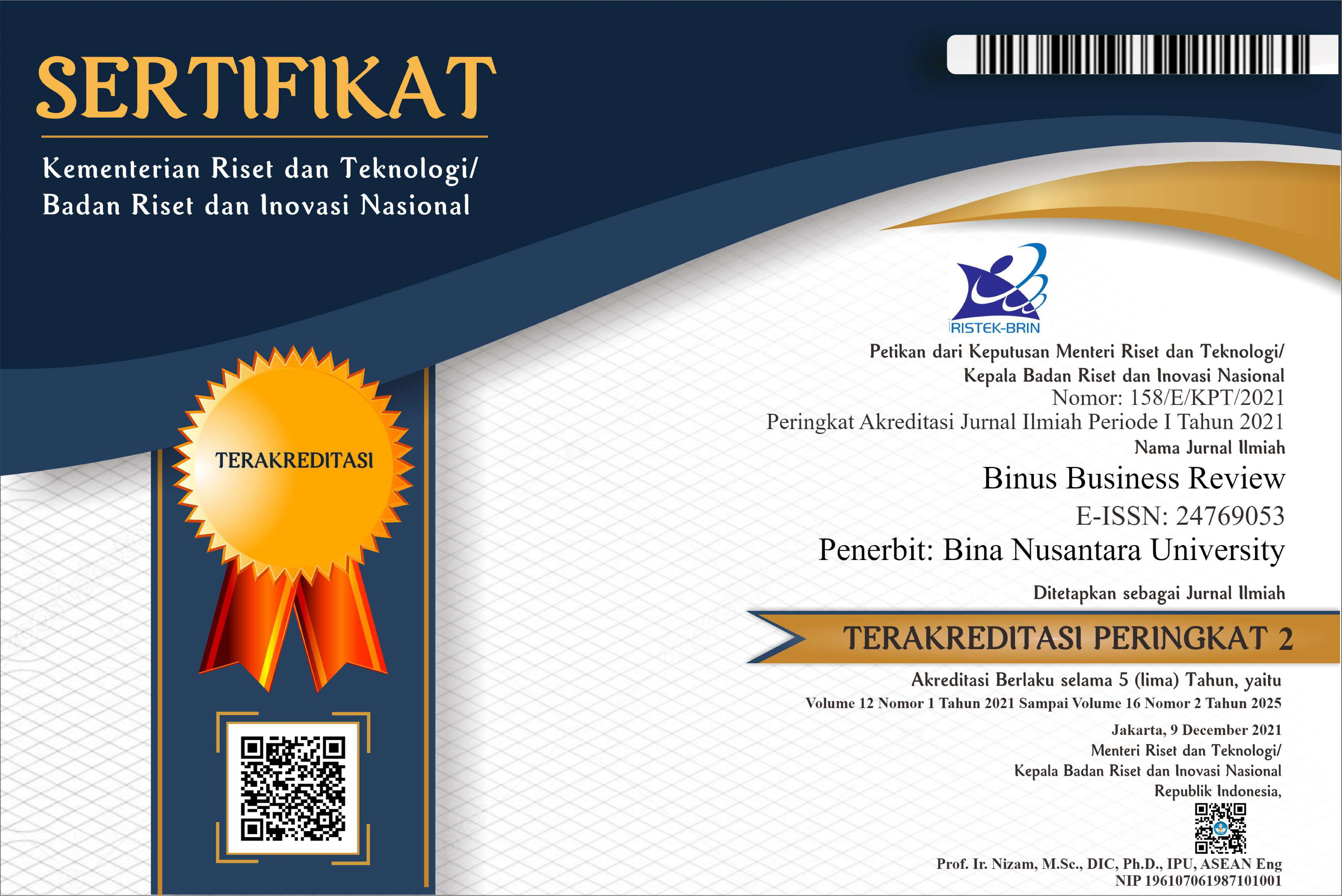Hubungan dan Pengaruh Audit Internal atas Fungsi Produksi untuk Menilai Efektivitas dan Efisiensi Proses Produksi
DOI:
https://doi.org/10.21512/bbr.v3i2.1359Keywords:
internal audit, effectiveness, efficiency, production processAbstract
The objective of this study is to examine the relationship and the influence between the internal audit toward production function to assess effectiveness and efficiency of the production process at PT.Sumber Nitrat Jaya. The type of research is survey with descriptive research and analysis technique used is the analysis of qualitative data and quantitative data analysis. The sample was 30 respondents. Based on the significance test of correlation coefficients between the variables, it shows a correlation between internal audit with the production function to assess the effectiveness and efficiency of the production process obtained a correlation coefficient of 0.950, which means there is a very strong relationship. By testing the hypothesis that the correlation of the results obtained there is a significant relationship between internal audit with the production function to assess the effectiveness and efficiency of production processes in PT Sumber Nitrat Jaya, because of Ho1 was rejected and Ha1 was accepted where t count HA1> T Table (16.156>2.048). Significance test based on the regression parameter showed a simple linear regression of Y = 4.523 + 0.581 X + ε. This is supported by testing hypotheses derived regression t count> T Table (16.156> 2.048) then there is a significant influence of internal audit toward the production function to assess the effectiveness and efficiency of production processes in PT Sumber Nitrat Jaya because Ho2 was rejected and Ha2 was accepted. This is also supported by the R square value of 0.903 obtained results, or 90.3%. This shows the contribution of internal audit in explaining the effectiveness and efficiency of production processes by 90.3% while the remaining 9.7% is explained by other factors not examined or not included in the model.Plum Analytics
References
Agoes, S. (2004). Auditing (Pemeriksaan Akuntan) oleh Kantor Akuntan Publik. Edisi 3. Jakarta:
Lembaga Penerbit FE Universitas Indonesia.
Arens, A. A., dan Loebbecke, J. K. (2003). Auditing Suatu Pendekatan Terpadu. Edisi Indonesia.
Terjemahan Amir Abadi Jusuf. Jakarta: Erlangga.
Indriantoro, N., dan Supomo, B. (2002). Metode Penelitian Bisnis. Yogyakarta: BPFE Yogyakarta.
Jusup, A. H. (2001). Auditing (Pengauditan). Buku Satu. Yogyakarta: STIE YKPN.
______ . (2001). Auditing (Pengauditan). Buku Dua. Yogyakarta: STIE YKPN.
Messier, W. F., et.al. (2004). Auditing and Assurance Services A Systematic Approach. Edisi 4.
McGrawHill Irwin.
Mulyadi. (2000). Akuntansi Biaya. Edisi Kelima. Yogyakarta: Aditya Media.
Mulyadi dan Puradiredja, K. (2002). Auditing. Buku Satu. Jakarta: Salemba Empat.
_______. (2002). Auditing. Buku Dua. Jakarta : Salemba Empat.
Prastito, A. (2005). Cara Mudah Mengolah Data Statistik. Jakarta: Gramedia Pustaka Utama.
Santosa, P. B., dan Ashari. (2005). Analisis Statistik dengan Microsoft Excell dan SPSS. Yogyakarta:
Andi.
Sekaran, U. (2002). Research Methods for Business. USA: Southern Ilinois University.
Siagian, D. (2000). Metode Statistika untuk Bisnis dan Ekonomi. Jakarta: Gramedia Pustaka
Utama.
Sugiyono. (2002). Metode Penelitian Bisnis. Bandung: CV Alfabeta.
_______. (2006). Metode Penelitian. Jakarta: Gramedia Pustaka Utama.
Swastha, B., dan Sukotjo, I. (2002). Pengantar Bisnis Modern. Edisi 3. Yogyakarta: Liberty.
Triton, P.B. (2006). SPSS 13.0 Tarapan: Riset Statistik Parametrik. Yogyakarta: ANDI.
Downloads
Published
Issue
Section
License
Authors who publish with this journal agree to the following terms:
a. Authors retain copyright and grant the journal right of first publication with the work simultaneously licensed under a Creative Commons Attribution License - Share Alike that allows others to share the work with an acknowledgment of the work's authorship and initial publication in this journal.
b. Authors are able to enter into separate, additional contractual arrangements for the non-exclusive distribution of the journal's published version of the work (e.g., post it to an institutional repository or publish it in a book), with an acknowledgment of its initial publication in this journal.
c. Authors are permitted and encouraged to post their work online (e.g., in institutional repositories or on their website) prior to and during the submission process, as it can lead to productive exchanges, as well as earlier and greater citation of published work.
USER RIGHTS
All articles published Open Access will be immediately and permanently free for everyone to read and download. We are continuously working with our author communities to select the best choice of license options, currently being defined for this journal as follows: Creative Commons Attribution-Share Alike (CC BY-SA)




















